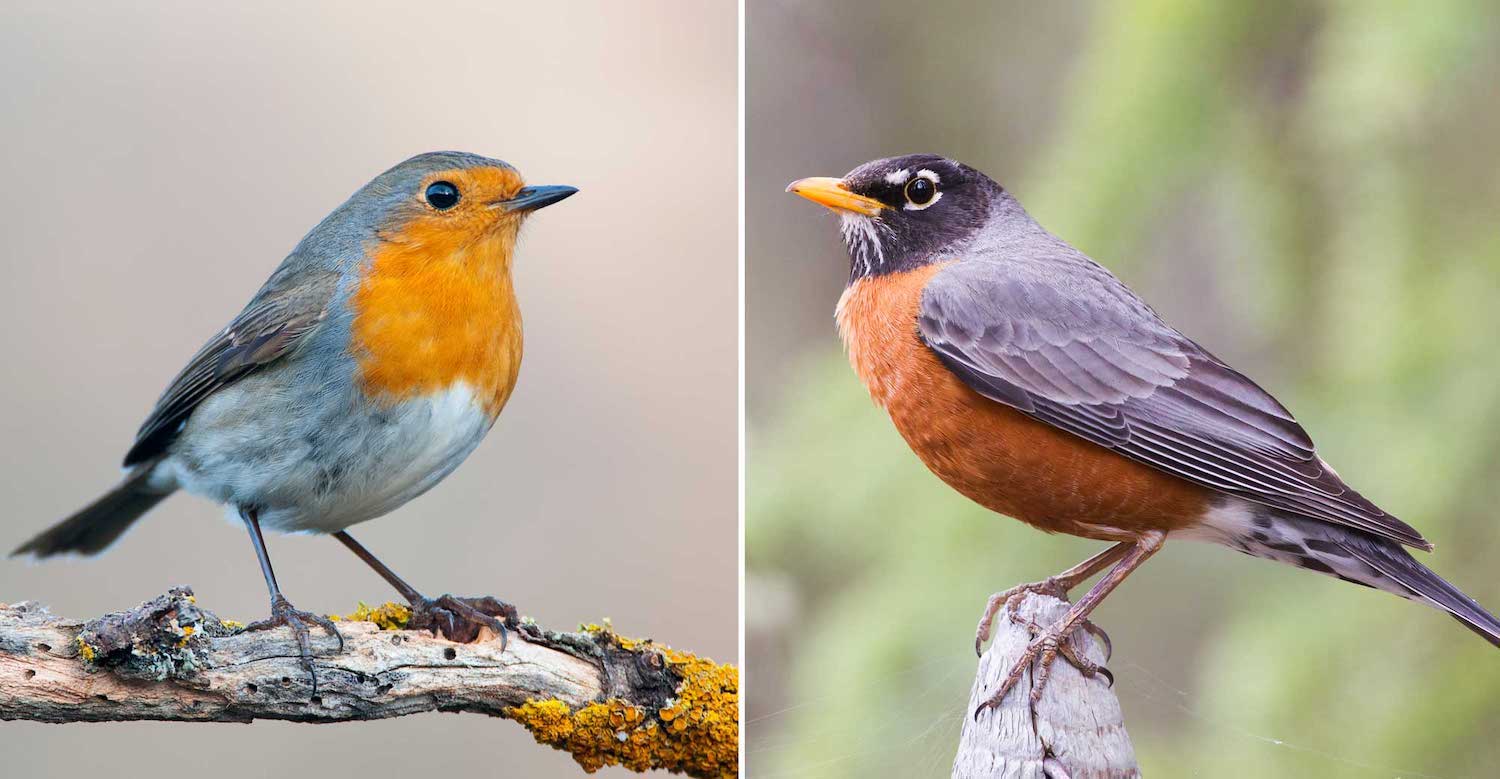What's the difference?: American robin vs. European robin

With a range that covers almost all of North America, the robin is perhaps the most familiar bird in the United States. We gladly welcome them back to our lawns each spring, ready once again to feast on earthworms as a sign of better weather ahead.
Our robin that we are so familiar with bears the same name as a bird native to Europe, and our American robin got its name because it reminded early European settlers of that similar-looking bird back home, the National Audubon Society reports.
The physical similarities between American robins and European robins start with their orange breasts, which the males and females of both species sport. Their brightly colored breasts are what make them so easy to identify, and this was the feature that reminded European settlers of the robins back home and resulted in both species being known as robins.
The American robin's orange color extends nearly the full length of its breast, while European robins have a shorter orange breast patch with white below. An American robin also sports a more deep orange color, while European robins have a more brightly colored shade of orange on their breasts. European robins also have orange faces, while American robins have dark-colored faces that match their wings and backs.
Both have dark-colored backs and wings — grayish-black for American robins and brown for European robins — but American robins are the larger of the two birds. European robins are about 5 1/2 inches long, while American robins are between 8 inches and 11 inches long. American robins are also much heavier, weighing up to 3 ounces, while European robins weigh less than 1 ounce, according to the Cornell Lab of Ornithology.
These two birds do share a few others things in common aside from their appearances. One such thing is their diet. American and European robins are insect eaters, but not exclusively so. In addition to insects, American robins are, of course, known to enjoy their fair share of earthworms, and they also eat a wide variety of fruits, the Cornell Lab reports. Similarly, European robins also have a more varied diet, eating fruits, seeds, worms and other invertebrates along with insects, according to the Natural History Museum in London.
They also share a preference for similar habitats. Both prefer wooded areas, but they are both also common visitors to grassy open areas where they can scavenge for food, according to the Cornell Lab. Just like our robins are a familiar sight in our yards and parks, so, too, are European robins a familiar sight in yards and parks where they live.
Both species of robins are common across their ranges, and while bird populations overall have been declining for the past several decades, both American and European robins have actually increased their populations. For the American robin, their range includes almost the entire continent of North America except for far northern Canada and Alaska and far southern Mexico, the Cornell Lab reports. The range for the European robin includes all of Europe, northern Africa and western Asia, according to Birds & Blooms.
The two robins are also similar in that they have migratory and non-migratory populations among their normal ranges. In more temperate parts of their ranges, most robins may not migrate. In areas that experience more harsh winter weather, robins may migrate to more temperate areas or change their behavior so they are not as often seen during the coldest periods.
Although their appearance, coloring and even behavior may be similar, American robins and European robins are not closely related in the bird world. American robins are thrushes, a group of songbirds with stocky builds and large eyes, while European robins are old world flycatchers, a group of songbirds that specialize and are adapted for catching insects in flight. Other common thrushes include gray catbirds and Eastern bluebirds. Old world flycatchers are birds native to Africa, Asia, Europe and Australia, so there are none that we are familiar with here in the United States.
